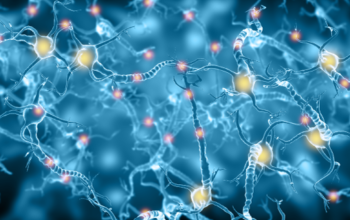
Date: 12th November 2019
The rise in success of CRISPR-Cas systems has been a rapid and accomplished journey. To date, this year alone has seen over 4,500 research papers using CRISPRs (PubMed).
Whilst these systems have been extensively used to activate and inhibit gene expression, achieving a dose-dependent activation of gene expression has been tricky without the use of exogenous regulatory factors.
Now scientists from the University of North Carolina, the Icahn School of Medicine at Mount Sinai and the National Institutes of Health have designed a system whereby chemical epigenetic modifiers (CEMs) recruit components of the endogenous chromatin-activating machinery to drive expression of target genes via catalytically inactive Cas9 (dCas9).
In eukaryotes, chromatin-modifying machinery can control gene expression turning genes both ‘off’ and ‘on’. Post-translational histone tail modification is a crucial component of chromatin remodelling making the DNA more or less accessible to the regulatory transcription machinery proteins.
By recruiting different chromatin-modifying enzymes the team hoped to activate endogenous gene expression using endogenous transcriptional activators.
In a previous study by the group, a small molecule CEM platform was used to specifically induce gene repression and histone deacetylation at a reporter gene site (green fluorescent protein (GFP)), repressing gene expression.
The CEMs were designed as bifunctional ligands. The first functional group (an immunosuppressive drug derivative (FK506)) acted as a transcription factor ligand able to recruit FK506 binding protein (FKBP). FKBPs are a family of proteins that can act as molecular switches, they bind directly to their protein target and alter confirmation. These proteins have diverse cellular functions including protein folding, cellular signalling, apoptosis and transcription. FK506 was attached via short linker to the second functional group, a histone deacetylase (HDAC) inhibitor able to recruit HDAC-containing corepressor complexes.
When expressed in mESCs (mouse embryonic stem cells) also infected with a plasmid expressing an FKBP-Gal4 fusion protein, the bivalent FK506-HDAC inhibitor bound to and recruited HDAC corepressor complexes, repressing GFP expression by up to 50%.
These experiments served as a solid proof of principle, and to further develop the system the team wanted to determine the feasibility of using CEM-activating (CEMa) molecules that could recruit endogenous gene-activating machinery, and switch genes ‘on’ rather than ‘off’.
CEM and dCas9–FKBP-based system
To test this they created a CEMa family able to recruit different chromatin-modifying enzymes, which were tested for compatibility with a dCas9–FKBP-based system. An inactive Cas9 (dCas9) FKBP fusion protein was designed to target the CEMs to the gene of interest for activation.
- CEM87: created with iBet762 (a bromodomain inhibitor), shown to bind BRD2, BRD3 and BRD4. BRDs have an important role in the targeting of chromatin-modifying enzymes to specific sites and are considered to be epigenetic readers.
- CEM88: created with a 1,3-dimethyl benzimidazolone, previously shown to bind the BRPF1 (bromodomain and PHD finger-containing protein 1). BRPF1 recognises different epigenetic marks and activates three histone acetyltransferases ((HATs) HATs are usually associated with increased gene expression).
- CEM114: created with ‘compound 33’, previously shown to bind CBP (CREB-binding protein). CBP is a transcriptional co-activator protein.
A human cell line was used as a testbed and cells were transfected with a GFP reporter gene downstream of a promoter (TRE3G). The cells were sorted by flow cytometry for those co-expressing a gRNA targeting the promoter, and the dCas9–FKBP. GFP reporter expression was then analysed after exposure to one of the three CEMa’s. In all three cases the individual CEMa’s were shown to increase GFP expression. The FKBP-dependency of the system was also confirmed, as replacement of dCas9–FKBP with dCas9 (non-fusion protein) did not show a significant change in GFP expression after CEMa exposure. Further tests of the individual functional groups of the CEMs determined that CEMa activation required the whole molecule.
Optimisation of the system
The team then sought to optimise various components of the Cas9 system. The aim was to increase the number of CEMs recruited to the chromatin.
When tested, the optimal system proved to be dCas9 MS2-FKBPx2. This system utilised modified gRNAs capable of recruiting both the dCas9 and an RNA-binding fusion protein (bacteriophage MS2 coat protein). In this case the MS2 was tethered to two FKBPs and each FKBP was able to bind a CEMa and in turn recruit a chromatin-modifying enzyme.
The two most efficient CEMa molecules were then tested along with the optimised Cas9 system in a dose-curve following the original experimental procedure. Both CEM87 and CEM114 treatments significantly increased GFP expression in direct response to CEM addition up to a concentration of ~200 nM.
The authors then validated that CEMa-mediated activation of GFP was a result of CEMa binding directly to the FKBP protein fusions, by using an excess of FK506 to outcompete the CEM from binding.
Combinatorial exposure to all three CEMa molecules did not increase GFP activation beyond than seen with CEM114 alone, indicating that CEM114 might yield the most effective activation and this system had reached expression saturation.
The system was also shown to be reversible and removal of the CEMa from the media or the addition of excess of FK506 during continued treatment showed attenuation of GFP expression.
Targeting endogenous gene expression
To determine whether endogenous gene expression could also be activated, the optimised dCas9– CEMa system was delivered into human cells via lentiviral particles. Cells containing the integrated system were selected and transfected with gRNAs targeting MYOD1 gene (myogenic differentiation 1). A time course of MYOD1 expression (quantitative RT–PCR) showed a peak of increased expression after 48 hours, which began to diminish thereafter and the response was determined to be dose-dependent.
The versatility of the dCas9–CEMa system was further explored using a range of endogenous genes. In the analysis, genes typically expressed at low-levels were shown to have the most significant increased levels of expression when targeted. Genes typically expressed at high levels were activated but to a lesser extent. Off-target effects were shown to be minimal
Future developments
The work presented here shows the emergence of the dCas9–CEMa system as a powerful synthetic biology tool capable of activating endogenous genes in a dose-dependent, gene-specific and reversible manner.
This method paves the way for exploring disease-relevant genes. To answer specific questions regarding the mechanism of action and understanding the dynamics of tuneable gene expression rather than simply ‘on’ or ‘off’.
It will certainly be a useful method in target validation work, for understanding the relationship between phenotype and gene dosage of a wide range of target gene concentrations.
From a clinical viewpoint epigenetic therapy has been proposed as a potential source of preventing the development of cancer, controlling the expression of tumour suppressor genes and oncogenes, or killing drug-resistant cells. Other diseases such as heart disease, diabetes, and mental illness have also been shown to have an epigenetic influence.
dCas9–CEMa technology has the ability to change the chromatin landscape and tethering epigenetic modulator drugs to the system would direct the pharmacology of the drugs to a constrained, specific locus reducing the potential off-target effects.
This scenario is far from being realised at this stage, however. Safety concerns, efficient delivery systems and the stability of the system will need further work. However, this is potentially the start of an exciting journey.
Chiarella, A. M., K. V. Butler, B. E. Gryder, D. Lu, T. A. Wang, X. Yu, S. Pomella, J. Khan, J. Jin and N. A. Hathaway (2019). “Dose-dependent activation of gene expression is achieved using CRISPR and small molecules that recruit endogenous chromatin machinery.” Nature Biotechnology.
https://doi.org/10.1038/s41587-019-0296-7
